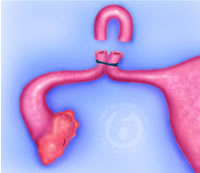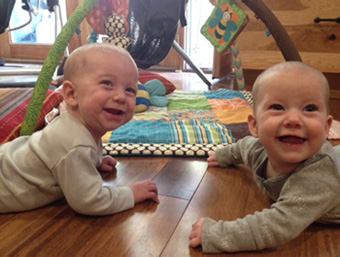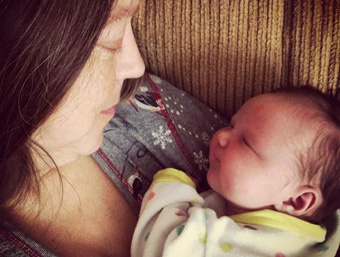Is There a Simple Procedure to Untie Tubes?
Women who have had their tubes tied and then want to get tubes untied often ask if there is a simple procedure that permits pregnancy after tubes tied. Often they envision a tubal ligation as if there is a bow tied around the tubes that can be simply untied, like one unties a shoelace. This is actually not the case. The common term “tying tubes” simplifies what is a tubal ligation – or tubal sterilization – is.
How Tubes are “Tied”
| Tied and Cut |
 |
| Final Result |
 |
The most common type of tubal ligation involves putting a surgical ligature (or tie) around a loop of the fallopian tube and then cutting off the segment that has been ligated. The two tubal segments separate from each other. This is the Pomeroy technique, first describe by Dr. Ralph Pomery. Some doctors burn the ends of the tubes that have been cut and may use the term “modified” Pomeroy procedure in their operative report.
Another common type of ligation/resection procedure is the Parkland tubal ligation. With this techniqe, two ligatures are placed around the tube at a distance from each other and the portion of the fallopian tube in between the ligatures is resected (cut out). There are many other variations of the ligation and resection method of tubal ligation.
Tubal sterilization can also be performed by burning the tubes. This may be done with electocoagulation (coagulation, cautery, or cauterization) or with thermal coagulation. There are also variations with the coagulation methods of tubal ligation, such as the use of monopolar or bipolar coagulators, and the number of sites burned and for how long they are burned. The greater the number and the longer coagulator is applied to the tube, the greater the amount of damage.
A third method of female sterilization involves simply blocking or obstructing the tube with clips or rings. In general, these tend to cause the least amount of damage to the tube. Of all tubal ligation techniques, the tubal clip (Filshie clip or Hulka clip) is the least damaging and the one that consistenly gives the best results when the tubes are “untied” or repaired.
Essure is another new tubal sterilization procedure. This does not require surgery, but it is the least reversible method for women wanting kids after tubal ligation.
Dr. Berger’s Comment
This summary is to help women who want to get their tubes untied. The first thing to know is what tying tubes actually means. It is not as simple as placing a string around the tube that can later be untied. Contrary to what some people think, tubes don’t become untied by themselves after a certain length of time. With this basic information about the fallopian tube and tubal ligation methods in mind, I will explain how reversal of tubal ligation is done in the next topic Tubal Reversal Blog – How to Get Tubes Untied: Reverse Tubal Ligation.









